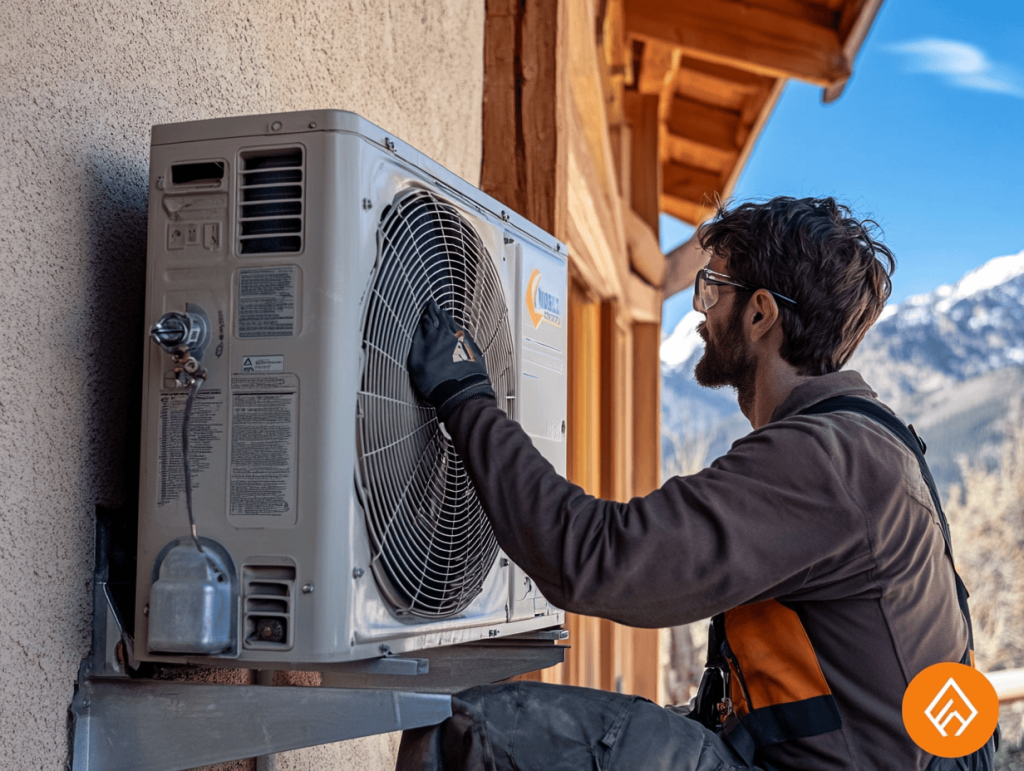Why Knowing the Installation Process Matters
If you’re planning a new AC system for your Alabama home, you may be wondering:
Understanding the full installation process puts homeowners at ease — and prevents surprises. At Climate Masters, Inc., we believe education leads to better long-term satisfaction.
In this article, we walk you through each step of the AC installation process, explain how to prepare, and answer the most common homeowner questions.
Step 1: Pre-Installation Home Evaluation
The installation process begins with a detailed in-home assessment by licensed HVAC professionals. This is not a one-size-fits-all job.
Technicians will:
📌 Why it matters: A poorly sized AC unit will either short-cycle (too big) or overwork (too small), leading to high bills and early failure.
Step 2: Choosing the Right AC System
Based on the evaluation, you’ll receive system recommendations suited to your home and climate. Popular options for Alabama include:
| System Type | Best For |
| Central AC | Whole-home comfort w/ ductwork |
| Heat Pump | Cooling + heating in one system |
| Ductless Mini-Split | Homes w/o ductwork, additions |
| Packaged Units | Small spaces, rooftop installs |
Technicians will also discuss:
Step 3: Permits and Scheduling
In Alabama, a licensed contractor must obtain permits for major HVAC installations. Climate Masters handles:
Once approved, your installation is scheduled based on system delivery timelines and your availability.
⏱️ Typical lead time: 2–7 days after system selection
Step 4: Preparing Your Home for Installation Day
Here’s what homeowners can do before the team arrives:
✅ Clear a 3–5 foot path to the indoor air handler and outdoor condenser
✅ Move pets and children away from work zones
✅ Remove any fragile or valuable items near the work area
✅ Make sure the thermostat area is accessible
Your HVAC team will bring all the tools, parts, and protective coverings needed.
Step 5: Old System Removal
If you’re replacing an existing unit, technicians will safely disconnect and remove the old system, including:
Old units are recycled or disposed of properly, per EPA guidelines.
📌 Pro Tip: Technicians may also discover duct damage, mold, or leaks that need repair during removal — this is common in older systems.
Step 6: New AC Installation & Setup
This is the most technical phase and usually takes 1 full day. Key steps include:
Indoor Work:
Outdoor Work:
All connections are vacuum-tested and sealed. If new ducts or electrical upgrades are needed, those are completed at this stage.

Step 7: System Startup and Testing
Before your installation is complete, technicians perform a full performance test:
| Test | What It Ensures |
| Refrigerant charge verification | Efficient cooling |
| Thermostat control test | Responsive operation |
| Static pressure test | Balanced airflow |
| Duct leak check | Energy efficiency |
| Temperature differential | Proper cooling output |
| Safety inspections | Code compliance |
Technicians then walk you through:
📌 Tip: Ask for filter size, warranty terms, and emergency contact info before they leave.
Step 8: Post-Installation Support
Installation day doesn’t end when the crew leaves.
With Climate Masters, you get:
Typical Timeline for New AC Installation
| Task | Time Estimate |
| Home evaluation | 1–2 hours |
| Permits & system delivery | 2–5 days |
| System removal | 1–2 hours |
| Installation & testing | 6–10 hours |
| Cleanup & walkthrough | 30–60 minutes |
Total process: From consultation to cool air — in about 1 week.
Common Questions About AC Installation
1. Do I have to leave the house during installation?
No, but be prepared for some noise and temporary power shutoffs. It’s safe to stay, especially if access is clear.
2. Will my floors or walls be damaged?
No. Technicians use drop cloths, shoe covers, and wall protection around key access points.
3. How long before the system starts cooling?
Immediately after testing is complete. Most homeowners feel a difference the same day.
4. Do I need to upgrade my electrical panel?
Sometimes — especially for heat pumps or high-SEER systems. We’ll assess this during your consultation.
5. Can I install the system myself?
No. HVAC installation requires licensed technicians and permit approval. DIY voids warranties and violates building codes.
What Can Delay an AC Installation?
While most AC installations are completed in a day, there are several common issues that can delay the process:
| Delay Factor | Explanation |
| Permit approval delays | Some counties may take longer than expected for HVAC permits |
| Electrical panel issues | Outdated panels may need an upgrade to meet load requirements |
| Custom ductwork | Older homes may need retrofitting or reconfiguration |
| Weather conditions | Rain or lightning can delay outdoor condenser installation |
| Delivery of special-order equipment | High-SEER systems or uncommon brands may have longer lead times |
Tip for Alabama homeowners: During peak summer months, scheduling is tight. It’s best to plan your installation in spring or early fall when technician availability is higher.
Post-Installation Maintenance Tips for Homeowners
Once your new AC system is up and running, it’s critical to protect your investment through proactive care:
Why Annual AC Tune-Ups Save You Money
Neglecting maintenance early on can undo the efficiency gains of a brand-new system.
How do I know my system was installed correctly?
Here are some signs of a properly installed system:
If you’re unsure, a post-installation inspection by your HVAC provider (like Climate Masters) can verify all metrics.
Final Takeaway: Installation Should Never Be a Mystery
A new AC installation is a major investment — but it doesn’t have to be stressful.
By understanding the process, preparing ahead, and partnering with experienced professionals like Climate Masters, Inc., you get:
Get Your Free AC Installation Quote Today
Or explore financing options and maintenance plans for total HVAC peace of mind.